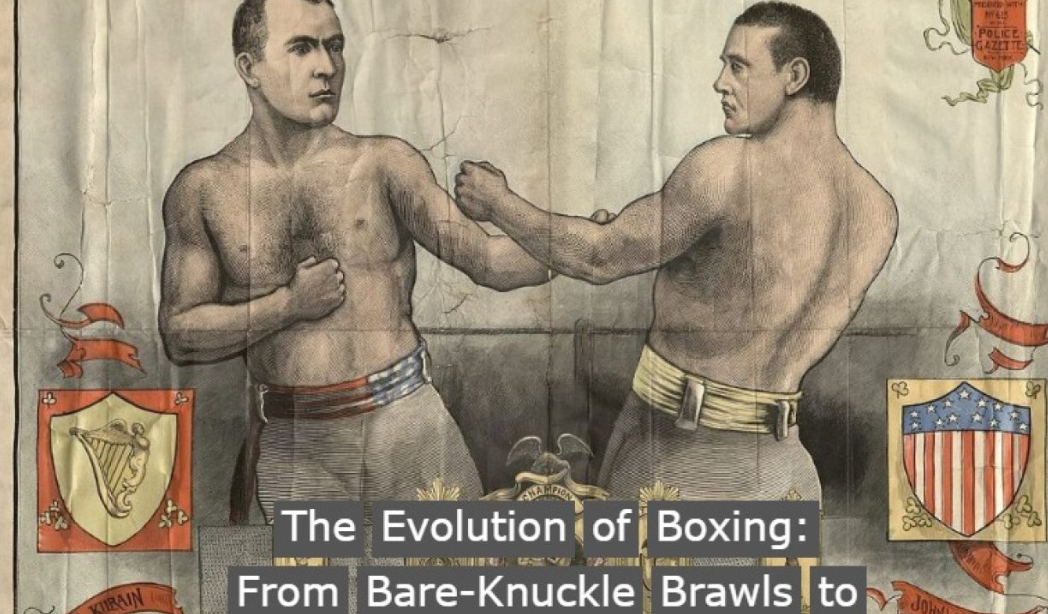
Boxing, known as "the sweet science," has a rich and storied history that spans centuries. From its humble beginnings as bare knuckle brawls to its current status as a global sporting phenomenon, boxing has evolved and transformed into a sport of skill, strategy, and immense athleticism. Let's take a journey through time and explore the remarkable evolution of boxing from its early origins to the modern day glory it enjoys today.
The roots of boxing can be traced back to ancient civilizations, with depictions of boxing found in Egyptian hieroglyphics dating back over 5,000 years. These early forms of boxing were often brutal and lacked many of the rules and regulations that define the sport today. Fighters used their bare fists and often fought to the point of exhaustion or even death. The concept of weight classes, rounds, and gloves were non existent in these early contests.
Fast forward to 18th century England, where boxing began to gain popularity in a more organized manner. This era is often referred to as the "bare knuckle" period, as fighters still competed without gloves. It was a time of fierce and brutal bouts, lasting for hours and sometimes going beyond the realm of sport. Fighters such as Tom Cribb, Daniel Mendoza, and John L. Sullivan rose to prominence during this era, captivating audiences with their skill and raw power.
As the 19th century unfolded, the need for greater safety and regulation in the sport became apparent. In 1867, the Marquess of Queensberry rules were introduced, which introduced significant changes to the sport. These rules included the use of gloves, standardized round lengths, and the introduction of weight classes. The Marquess of Queensberry rules laid the foundation for modern boxing and shifted the focus from sheer brutality to skill and strategy.
Boxing began to take its modern form during the early 20th century. Legendary fighters such as Jack Johnson, Joe Louis, and Muhammad Ali emerged during this period, capturing the imagination of fans worldwide. These fighters not only showcased their exceptional boxing skills but also used their platforms to bring attention to social and political issues. The sport became an outlet for expressing personal and societal struggles, transcending its physical boundaries.
The second half of the 20th century witnessed the rise of organized professional boxing with the formation of major governing bodies such as the World Boxing Association (WBA), World Boxing Council (WBC), and International Boxing Federation (IBF). These bodies established unified rules, regulations, and championship titles, further legitimizing the sport. The introduction of weight classes and the adoption of a global ranking system added structure and competitiveness to the sport.
In recent years, boxing has experienced a resurgence in popularity and commercial success. Major promotions and high profile fights draw massive audiences and generate significant revenue. The emergence of fighters like Floyd Mayweather Jr., Manny Pacquiao, and Canelo Alvarez has brought the sport to new heights of global recognition. Additionally, technological advancements have made boxing more accessible to a wider audience, with televised and streaming platforms bringing the action to screens around the world.
Modern day boxing combines a blend of physical prowess, strategic thinking, and disciplined training. Fighters meticulously prepare for their bouts, employing various training techniques and adopting scientific approaches to enhance their performance. The sport has become a multi billion dollar industry, attracting sponsors, endorsements, and media attention from all corners of the globe.
Moreover, there is an increased emphasis on fighter safety in today's boxing. Medical advancements and a greater understanding of head trauma have led to improved protocols and regulations aimed at protecting boxers from long term damage. Regular medical check ups, stricter licensing procedures, and mandatory suspensions after knockout losses are among the measures implemented to prioritize the well being of fighters.
In conclusion, boxing has come a long way from its primitive origins as bare knuckle brawls. The sport's evolution into a regulated, skill based competition has elevated it to unprecedented levels of popularity and global recognition. From the Marquess of Queensberry rules to the modern day glory of high stakes championship fights, boxing continues to captivate audiences with its mix of athleticism, strategy, and human drama. As we move forward, it is certain that boxing will continue to evolve, adapt, and leave an indelible mark on the world of sports.